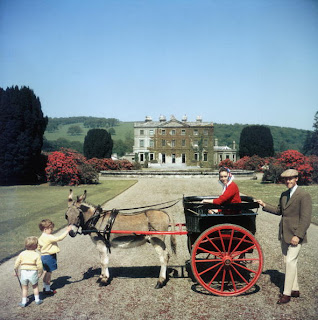Louie Bennett was on one of those activists whose energy leaves you exhausted, just on the page. Starting in the women's suffrage movement, she went on to reorganize a trade union, the Irish Women Workers' Union (IWWU), became a peace campaigner, served in public office and travelled the world in support of a wide range of causes. Partly because of her commitment to non-violence, she kept her distance from the alpha males of the Irish labor movement, notably James Connolly and James Larkin; however, in the aftermath of the Easter Rising, she campaigned against British excesses, speaking against the Black and Tans both in America and to Lloyd George personally. During the Irish civil war, she served on the Women's Peace Committee as a mediator.Protecting the rights of women in the workplace wasn't easy in conservative Ireland: even within the IWWU there was debate in the 1930s over whether it should admit married women with working husbands. She led a successful strike of laundry workers to obtain two weeks' paid holidays and, as the DIB states, "consistently condemned colonialism, fascism and armaments expenditure." I liked this detail of her character: "she often used threatened resignations as a means of controlling her colleagues." Great people aren't always easy to be around.
It's in the nature of colonial matters that dynasties come to dominate. We've seen a few of these families before and the latest are the Beresfords, who carve out 10 pages of the DIB. The first appears to be Tristram Beresford, a Kentish man sent to Ireland to build and fortify Coleraine. He annexed land and looted timber and even the London companies that installed him rebuked his corruption. It was said of him that his "tyrrany in Coleraine equalled that of the Spanish inquisition" but he successfully resisted all efforts to remove him. His son was created a baronet, and his great-great grandson, Marcus, became the Earl of Tyrone. Marcus' son George became Marquess of Waterford. And so on. So entrenched were the Beresfords that Marcus' grandson, also Marcus, was named joint-taster of wines for Dublin port at the age of 9, a position he enjoyed for 24 years (his brother John Claudius succeeded him in this onerous position). I have no idea what this job entailed, but I see from this that in 1734 the job was worth three hundred pounds per year. The Beresfords were politicians, soldiers, churchmen - in other words, enjoying all of the the usual trappings of the entrenched ruling families.I felt a little sorry for George Thomas Beresford, who clearly had no idea of how the tide was turning: He was sent to Eton and rose in the army to the rank of major-general, after which he was installed in various parliamentary seats controlled by his elder brother. He "rarely spoke in parliament, but consistently voted against catholic emancipation" while continuing to accumulate colonial offices: governor of Co. Waterford, colonel of the county militia, and so on. Then - there being 41 catholic voters in his constituency of Waterford for every protestant - in 1825 somebody have the bright idea of fielding a candidate against him (sundy Beresfords had held the seat for 70 years). Of course, he was swept aside - he stood down before the election - although it's unfortunate, if understandable that among his opponents' election slogans was "down with the protestants". He was apparently bitter about the experience, but the family learned something: it changed its mind about catholic emancipation, voted for it, and saw poor George returned unopposed for Waterford in the 1830 election.
The Beresfords still hang on. The Wikipedia entry on the present Marquess of Waterford is so irresistibly ludicrous that it must be quoted in full:
John Hubert de la Poer Beresford, 8th Marquess of Waterford (born 14 July 1933) is an Irish peer. He succeeded to the marquessate in 1934. He was educated Eton, and later served as a Lieutenant Royal Horse Guards Supplementary Reserve. The Marquess married, in 1957, the Lady Caroline Olein Geraldine Wyndham-Quin, daughter of 6th Earl of Dunraven and Mount-Earl and has issue. The Marquess' family seats are Curraghmore, Portlaw, County Waterford and Glenbridge Lodge, Valleymount, County Wicklow. Additionally, the Marquess' club is White's. Lord Waterford's heir apparent is Henry Nicholas de la Poer Beresford, Earl of Tyrone (b. 1958).This picture, of the present Marquess and family before their Curraghmore home, suggests the depths into which a once-great dynasty has fallen.


No comments:
Post a Comment